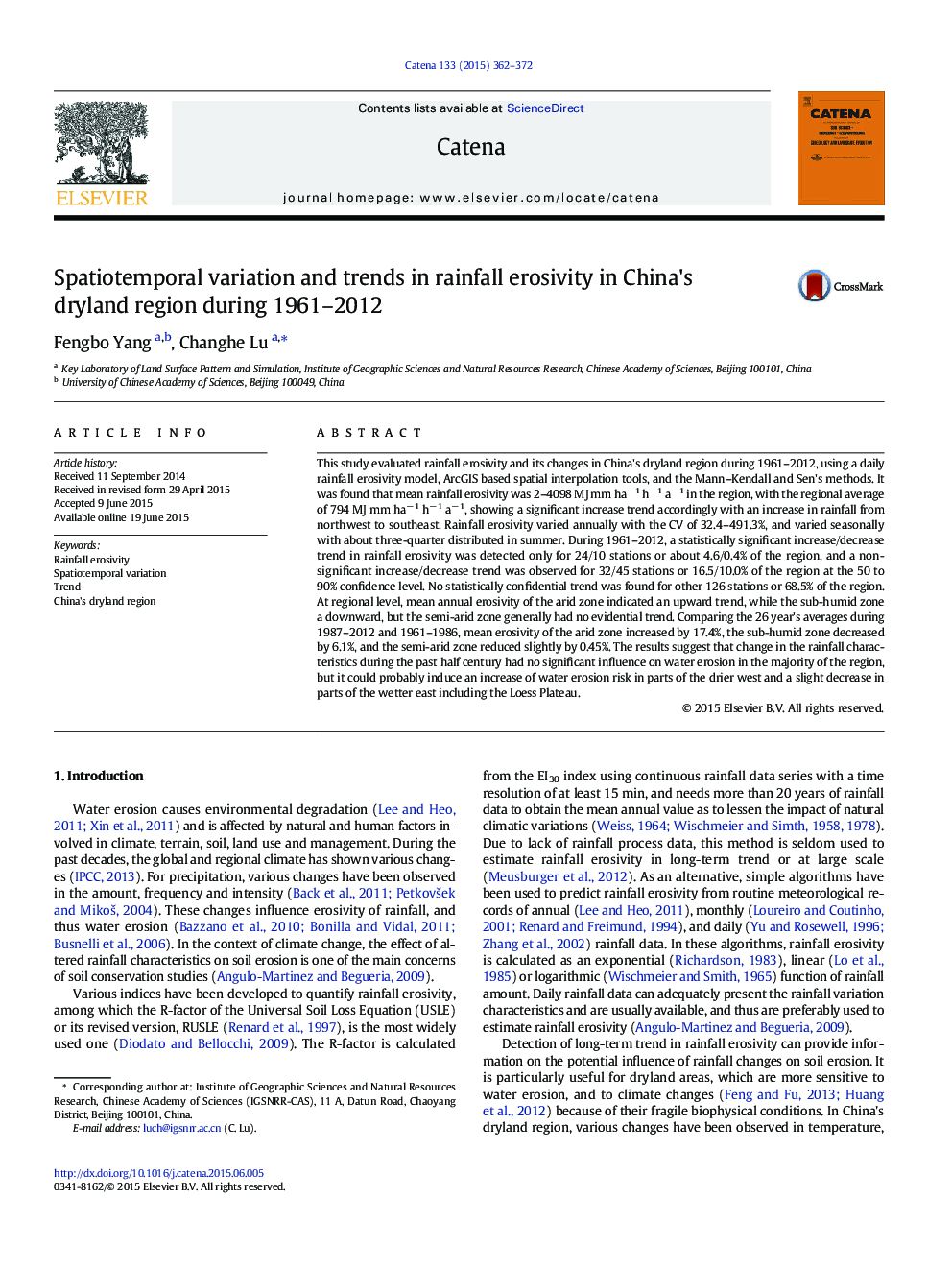| کد مقاله | کد نشریه | سال انتشار | مقاله انگلیسی | نسخه تمام متن |
|---|---|---|---|---|
| 4571053 | 1629219 | 2015 | 11 صفحه PDF | دانلود رایگان |

• Rainfall erosivity increased with increasing rainfall from northwest to southeast.
• Rainfall erosivity showed an increase/decrease trend in 21/10% of the region.
• Mean annual rainfall erosivity of the arid and sub-humid zone showed an opposite trend.
This study evaluated rainfall erosivity and its changes in China's dryland region during 1961–2012, using a daily rainfall erosivity model, ArcGIS based spatial interpolation tools, and the Mann–Kendall and Sen's methods. It was found that mean rainfall erosivity was 2–4098 MJ mm ha− 1 h− 1 a− 1 in the region, with the regional average of 794 MJ mm ha− 1 h− 1 a− 1, showing a significant increase trend accordingly with an increase in rainfall from northwest to southeast. Rainfall erosivity varied annually with the CV of 32.4–491.3%, and varied seasonally with about three-quarter distributed in summer. During 1961–2012, a statistically significant increase/decrease trend in rainfall erosivity was detected only for 24/10 stations or about 4.6/0.4% of the region, and a non-significant increase/decrease trend was observed for 32/45 stations or 16.5/10.0% of the region at the 50 to 90% confidence level. No statistically confidential trend was found for other 126 stations or 68.5% of the region. At regional level, mean annual erosivity of the arid zone indicated an upward trend, while the sub-humid zone a downward, but the semi-arid zone generally had no evidential trend. Comparing the 26 year's averages during 1987–2012 and 1961–1986, mean erosivity of the arid zone increased by 17.4%, the sub-humid zone decreased by 6.1%, and the semi-arid zone reduced slightly by 0.45%. The results suggest that change in the rainfall characteristics during the past half century had no significant influence on water erosion in the majority of the region, but it could probably induce an increase of water erosion risk in parts of the drier west and a slight decrease in parts of the wetter east including the Loess Plateau.
Journal: CATENA - Volume 133, October 2015, Pages 362–372